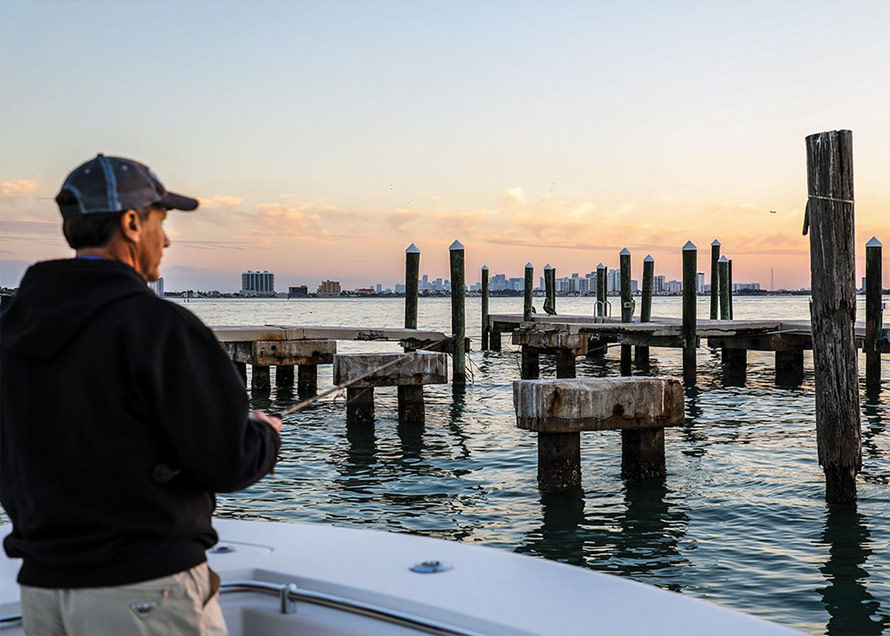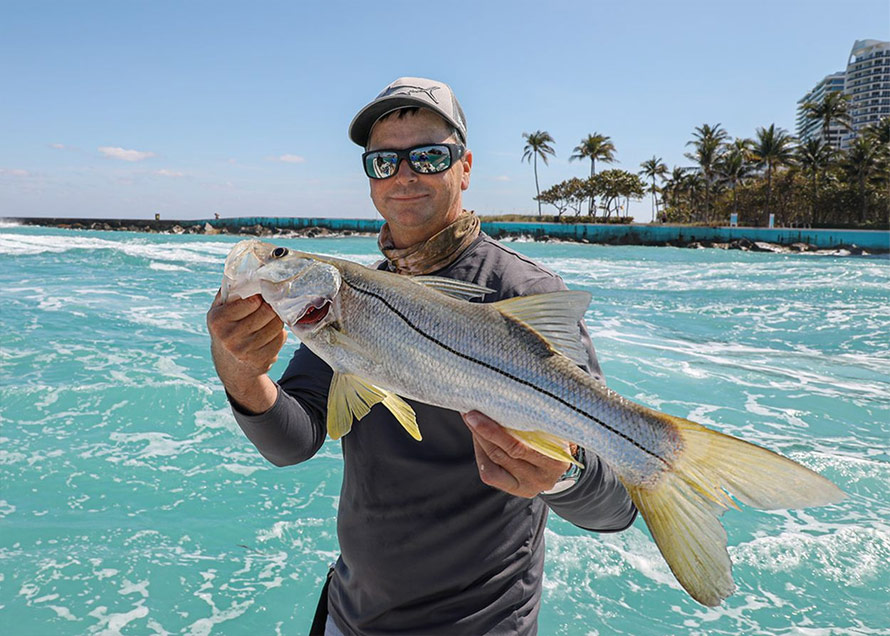Celebrating
|
Find Fish in New Waters
|
| Familiar clues point to success in unfamiliar locales. |
| by George Poveromo |
| RETURN TO HOW TO'S MAIN PAGE - CLICK HERE |
 |
| Fishing new locations can be as intimidating as it is exciting. Regardless of the area, however, there are key essentials that lead to fish. Factor in the following points prior to such a trip, and also once on location, and you’ll likely earn a spot at the fish-cleaning table at day’s end. |
| Structure Be it for sanctuary, ambush cover or spawning, gamefish thrive around structure, of which there are various types. Therefore, study premium, highly detailed charts (electronic or paper) with tight contour lines that show troughs, ledges, shelves, rock formations, channels and crevices to help -determine where your target gamefish might be lurking. |
| Soft Targets Troughs are especially good holding spots for large striped bass, fluke, redfish, trout, snook or tarpon. Those close to ocean passages are productive for fish transitioning between inshore and nearshore waters. Within inlets and along beaches, large king mackerel come from troughs, which provide an opportunity for fish to remain out of a hard current and ambush bait. Rocks, hard bottom patches, and even small pieces of debris over mostly sand or mud bottom are usually havens for fluke, tautog, snook, trout, cobia, grouper and snapper. For instance, the shallow Gulf rock piles off the Marquesas, some 28 miles west of Key West, are relatively small targets. Sitting in 30 to 55 feet of water, they’re often overlooked for greener pastures. However, those small targets keep the rods bending with red, gag and Goliath groupers, and lane, mangrove and mutton snappers, along with the occasional king mackerel. The same principle applies throughout the entire Gulf Coast, as well as along Atlantic-side shallows, given some variation in the available species. |
 |
| Hard Targets Bridges, inlets, artificial reefs, oil rigs, and the Intercoastal Waterway are obvious fish attracters. Bridges can be excellent for striped bass, snook, tarpon, redfish, fluke, and grouper and snapper. Probing their up-current side with free-lined live baits, pitched bucktails, or trolled swimming plugs often leads to success. Inlet jetty points, where fish stalk prey in back eddies, are also prime. Providing traffic isn’t heavy, trolling swimming plugs through inlets and passes and along the ICW is an excellent way to locate fish and bottom structure. |
| Suspended Targets Weed lines and floating debris attract dolphin and wahoo. Yet such structure is only as productive as the bait it gathers. The longer a board, tree or crate remains at sea, the more growth it accumulates. In time, it supports a thriving ecosystem complete with forage species and gamefish. If a board looks fresh or a weed line is devoid of bait, don't waste time on them; search out live weed lines and debris. |
| Water Flow Good water flow is essential for successful fishing, as is the proper water-temperature window for desired species. Flowing water moves bait and activates the feeding stations outlined above, as well as those along the edges of flats, at creek mouths and within inlets. Also, note the whereabouts of any impoundments, which discharge after heavy rains; the backsides of eddies forming around the outflow, and the funneling of that water (and forage) out the mouth of a canal or creek become major feeding stations. Offshore, water-circulation features hint where action may occur. For instance, shoreward-spinning Gulf Stream eddies bring tuna and billfish within range of many anglers. The varying temperatures of the two converging water masses (warm-water eddy versus nearshore-slope water) create thermal boundaries, which, in turn, spawn mini ecosystems that include plankton and algae blooms, small species foraging on these blooms, larger baitfish and, ultimately, gamefish. Furthermore, the edge of the eddy flowing from deep to shallow creates nutrient-rich upwellings, supercharging its potential. The longer an eddy remains parked over prominent bottom structure, the more life it attracts. Off Florida’s Atlantic coast, the Gulf Stream’s true western edge is sought after for reasons similar to mid-Atlantic and Northeast eddies. Fingers are more prominent with Gulf Stream travel here, where an elongated pull of warm water heads shoreward a bit, prior to curving south and eventually being reabsorbed within the Gulf Stream. Knowing the whereabouts of the Gulf Stream’s true western edge and any fingers helps locate weeds and fish. Upwellings and bait-rich pockets are likely where the true edge (or finger) -intersects deep bottom structures. Within the Gulf of Mexico, offshoots from the Loop Current bring tropical water and fish associated with it closer to shore. Prime fishing conditions materialize where one converges over -offshore bottom structure, like in the previous scenarios. |
 |
| Transition Zones Based on their respective inshore and offshore environments, transition zones vary widely. For instance, when seeking seatrout, sand holes interspersed among sea grasses make excellent targets. Here, trout ambush mullet, pilchards, pinfish and shrimp taking advantage of the camouflage provided by the surrounding grasses. As mentioned, ICW channels are fish havens. It’s within the transition zones along their edges, as well as any high points, rock formations and ruts within them, where fish gather. When night-fishing along bridges and docks, shadow lines provide cover for snook, striped bass, trout, tarpon and snapper. They ambush bait attracted to the bright side of the shadow line. Inshore rips, such as where a strong tide abuts a curving sea wall or shallowing bottom, are also transition zones. Again, gamefish station on the calmer side of the flow or along back eddies, gorging on bait swept by. Offshore transition zones include tide lines and rips, which are often marked by sharp color contrasts and weeds. These are bait-rich zones, with dirtier sides serving as cover for both prey and predators. |
| Bait All these scenarios are predicated on their likelihood of attracting bait and, in turn, gamefish. Obviously, pockets of bait marked on a sonar, flying fish showering offshore, or bait schools migrating along beaches all deserve serious attention, especially if within the depth window of the targeted gamefish. Among the best bets here would be to troll or cast baits or lures mimicking the size and colors of this forage, or procure some of them for use when live-baiting. |
| RETURN TO HOW TO'S MAIN PAGE - CLICK HERE |

